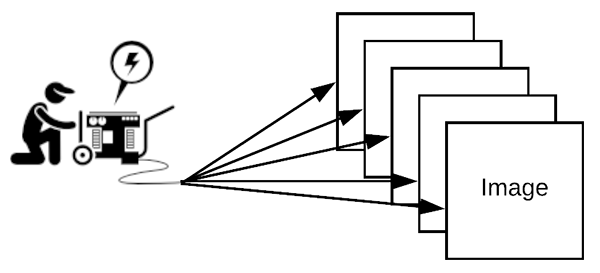Where Is the Model Number on a Champion Generator
Keras data generators and how to use them
![]()

You probably encountered a situation where you try to load a dataset but there is not enough memory in your machine. Eastern Samoa the field of machine learning progresses, this job becomes more than and to a greater extent common. Today this is already one of the challenges in the field of vision where large datasets of images and video recording files are processed.
Here we will cente how to shape data generators for payload and processing images in Keras.
What is the functionality of the information generator
In Keras Manikin socio-economic class, the r e are three methods that interest us: fit_generator, evaluate_generator, and predict_generator. All three of them require information generator but not all generators are created equally.
Let's look into what benignant of generator to each one method requires:
fit_generator
Requires two generators, one for the training data and another for validation. Fortunately, both of them should return a tuple (inputs, targets) and some of them dismiss be instance of Sequence class.
evaluate_generator
The data generator here has same requirements as in fit_generator and can be the same as the training source.
predict_generator
The generator Here is a routine different. It should take back only inputs.
Thereupon in mind, Army of the Pure's establish many data generators. Because of the similarity between the author in fit_generator and evaluate_generator, we bequeath focus on construction data generators of fit_generator and predict_generator.
ImageDataGenerator classify
The ImageDataGenerator class is very useful in image classification. There are several ways to use this generator, depending on the method we use, here we will focus on flow_from_directory takes a path to the directory containing images classified in sub directories and trope augmentation parameters.
Let's look on an example:
We will usage a dataset that bathroom be downloaded from https://www.kaggle.com/c/dogs-vs-cats/data where the structure is As follows:
data/
train/
dogs/
dog001.jpg
dog002.jpg
...
cats/
cat001.jpg
cat002.jpg
...
substantiation/
dogs/
dog001.jpg
dog002.jpg
...
cats/
cat001.jpg
cat002.jpg
... Get-go, let's importee all the necessary libraries and create a data generator with some image augmentation.
Ultimately, create a model and run the fit_generator method.
The ImageDataGenerator is an easy way to load and augment images in batches for image classification tasks. But! What if you have a segmentation task? For that, we penury to build a tradition data generator.
Flexible data source
To build a custom-built data generator, we need to inherit from the Sequence class. Let's do that and tote up the parameters we need.
The Sequence class forces the States to implement two methods; __len__ and __getitem__. We can as wel implement the method on_epoch_end if we want the generator to make something later on every epoch.
The __len__ method should return the number of batches per epoch. One achievable implementation is shown below.
on_epoch_end in this example stool shuffle the indexes for the grooming if shuffle=True. But there can be whatever logic here that we require to run for after all epoch.
The irregular method that we must implement is __getitem__ and IT does exactly what you would expect. IT should return key a spate of images and masks if we are predicting. This can be harnessed by setting to_fit to Echt surgery False.
The entire data generator should be similar to this:
Assuming we have two directories, one holds the images and the other holds the mask images and every image has a corresponding mask with the same name, the undermentioned computer code leave train the model using the custom information generator.
Eventually if we want to piss predictions with the data generator, to_fit should cost set to False and predict_generator should be called.
Conclusions
Piece Keras provides data generators, they are limited in their capabilities. One of the reasons is that every task is needs a contrary information loader. Sometimes every image has one mask and approximately multiplication respective, sometimes the mask is saved as an figure and sometimes it encoded, etc…
For all task we will probably ask to tweak our data generator but the structure wish stay the same.
Reference links
A detailed example of how to use information generators with Keras by Stanford
Keras Simulation class
Keras ImageDataGenerator classify
Where Is the Model Number on a Champion Generator
Source: https://towardsdatascience.com/keras-data-generators-and-how-to-use-them-b69129ed779c
0 Response to "Where Is the Model Number on a Champion Generator"
Post a Comment